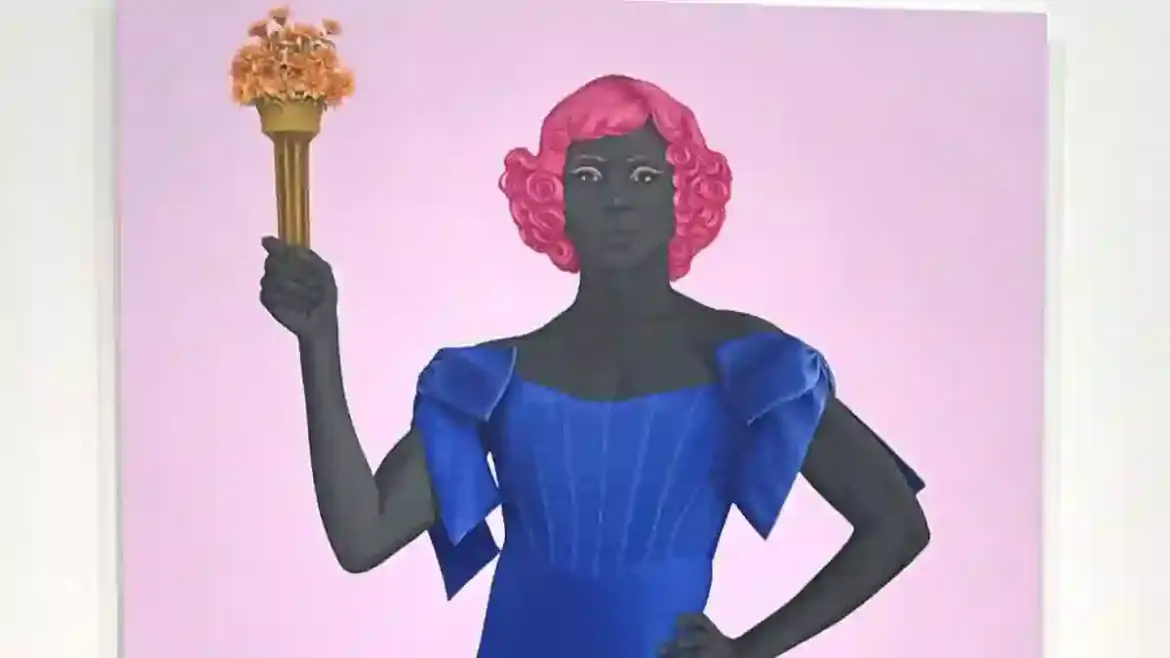In the middle of a summer already buzzing with political drama, President Donald Trump has shifted his sights to one of America’s most cherished institutions: the Smithsonian.
Known as the nation’s premier museum and research complex, the Smithsonian now finds itself at the center of a new culture war, with Trump demanding that certain “woke” art and exhibits be removed from its galleries.
The president ignited the controversy in a fiery social media post earlier this month, claiming that museums had become obsessed with “how bad slavery was” and ordering his legal team to comb through exhibits deemed anti-American.
The ensuing list singled out works covering racism, LGBTQ issues, immigration, and even pieces referencing Dr Anthony Fauci, former COVID-19 health chief and a frequent Trump target.
From Campuses to Cultural Halls
This isn’t the first time Trump has tried to police American institutions.
Previously, he threatened to cut funding to colleges and universities that resisted curbing diversity initiatives or addressing antisemitism.
Now, with the country approaching its 250th anniversary in 2026, the White House insists that cultural institutions should celebrate a more “patriotic” narrative and strip out what it sees as anti-American ideology.
Critics, however, argue that this is an attempt to rewrite history and silence artists.
The Smithsonian, which includes 21 museums and galleries across Washington, DC, and the National Zoo, has so far stayed silent.
While Congress funds much of its budget, the institution prides itself on independent curation.
Civil rights organizations are ringing alarm bells.
Black Lives Matter condemned Trump’s efforts as an attempt to trap the nation in a “fairytale” version of America, erasing slavery, racism, and the struggles of marginalized communities.
Some have even drawn parallels to authoritarian regimes that manipulate culture to control collective memory.
Art Under Fire: Rigoberto Gonzalez
One painting drawing particular ire from the White House is Rigoberto Gonzalez’s Refugees Crossing the Border Wall into South Texas.
The piece depicts a Mexican family climbing a ladder over the U.S. border wall.
Critics accused it of “commemorating illegal border crossings,” but Gonzalez, a Mexican-born U.S. citizen, argues that his work is a reflection of reality, not propaganda.
“My work is political, and that painting in particular was questioning the anti-immigrant sentiment of the time,” Gonzalez told NPR.
He compared the scrutiny to Nazi-era cultural censorship and said he plans to continue addressing immigration in future works.
Intellectual Targets: Ibram X. Kendi
The Smithsonian list didn’t just target visual art; it also flagged scholarly work, including that of historian and author Ibram X. Kendi.
Known for his book How to Be an Anti-Racist, Kendi’s writing has featured in exhibits at the National Museum of African American History and Culture, exploring whiteness and racial bias.
The Trump administration dismissed Kendi as a “hardcore woke activist.”
Kendi, however, sees the attack as an attempt to discredit serious scholarship.
“Those of us who study racism have been described as activists, instead of scholars presenting research and analysis,” he said.
“It’s a way to distract from the truth and turn me into a boogeyman.”
Amy Sherald and the Reimagined Liberty
Amy Sherald, famed for her portrait of Michelle Obama, also found her work targeted.
Trans Forming Liberty depicts a Black transgender woman in a flowing blue gown with pink hair holding a torch, a bold reimagining of the Statue of Liberty.
Critics in the administration dismissed it as a “transgender Statue of Liberty.”
Sherald canceled her show at the National Portrait Gallery to avoid backlash. “We’re talking about erasure every day,” she explained.
“Every portrait I make now feels like a counterattack against attacks on American history, Black history, and Black Americans.”
Hugo Crosthwaite and the Fauci Series
San Diego artist Hugo Crosthwaite also landed on the blacklist for his series of 19 drawings documenting Dr Fauci’s career, from HIV/AIDS work to pandemic leadership.
Commissioned by the National Portrait Gallery in 2022, the series drew conservative ire, with Fauci being a symbol of COVID-era restrictions.
“They just decided to hate it because it’s about Fauci,” Crosthwaite said.
Far from intimidated, he said being on the “wall of shame” felt like an honor.
“Censorship usually backfires. It draws more attention to the work, which is wonderful.”
Museums, History, and Patriotism
The debate over these artworks highlights a larger question: what role should museums play in presenting America’s past?
Trump and his allies argue taxpayer-funded institutions shouldn’t “indoctrinate” the public with content about racism or sexual identity, instead pushing patriotic narratives for the 250th anniversary celebrations.
“Everything discussed is how horrible our country is, how bad slavery was, and how unaccomplished the downtrodden have been,” Trump wrote.
“Nothing about success, nothing about brightness, nothing about the future.”
Artists, curators, and academics counter that erasing uncomfortable truths risks whitewashing history. For now, the Smithsonian remains silent.
How it responds could shape how America tells its story in 2026—and how much space there will be for voices challenging the centers of power.



